




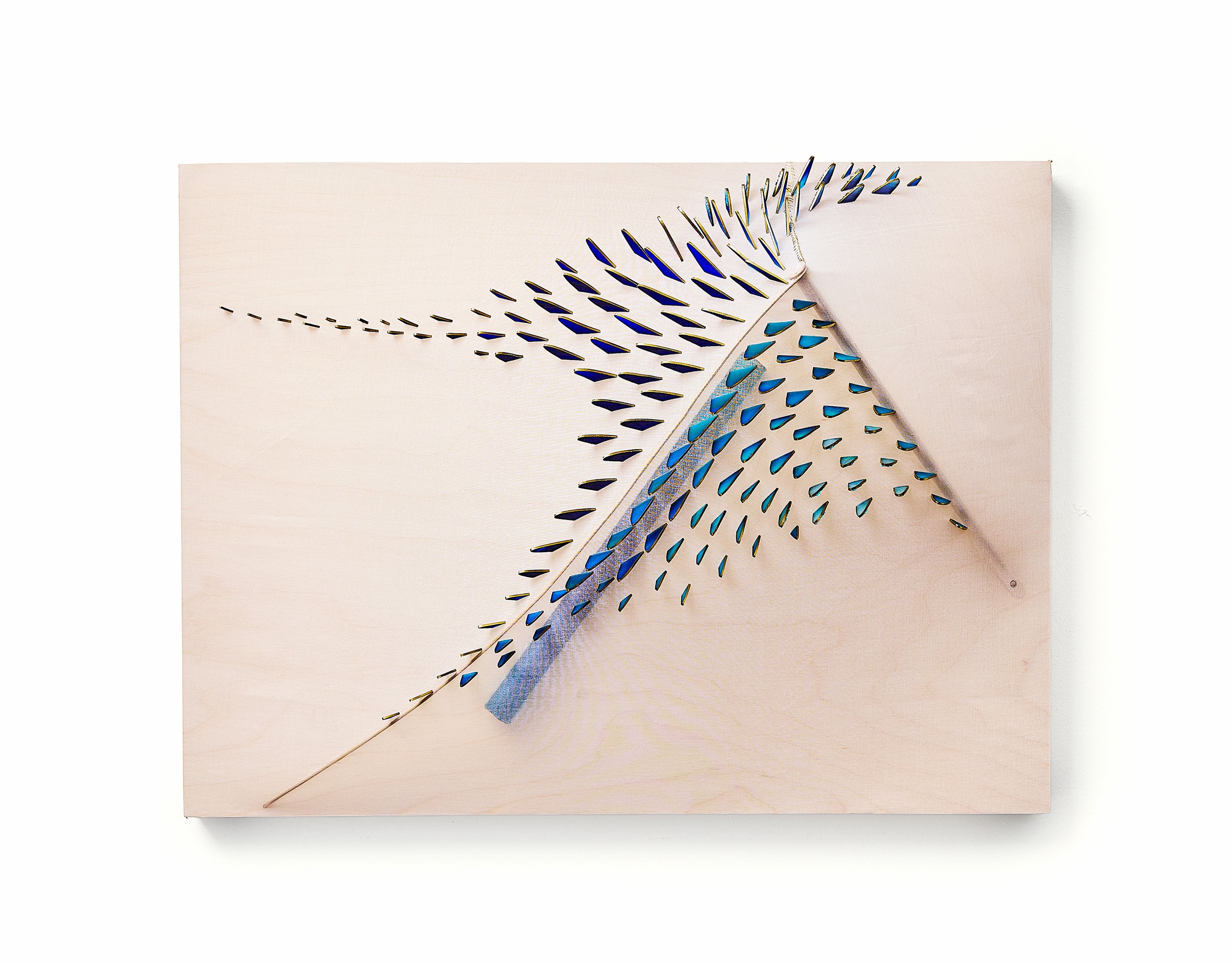


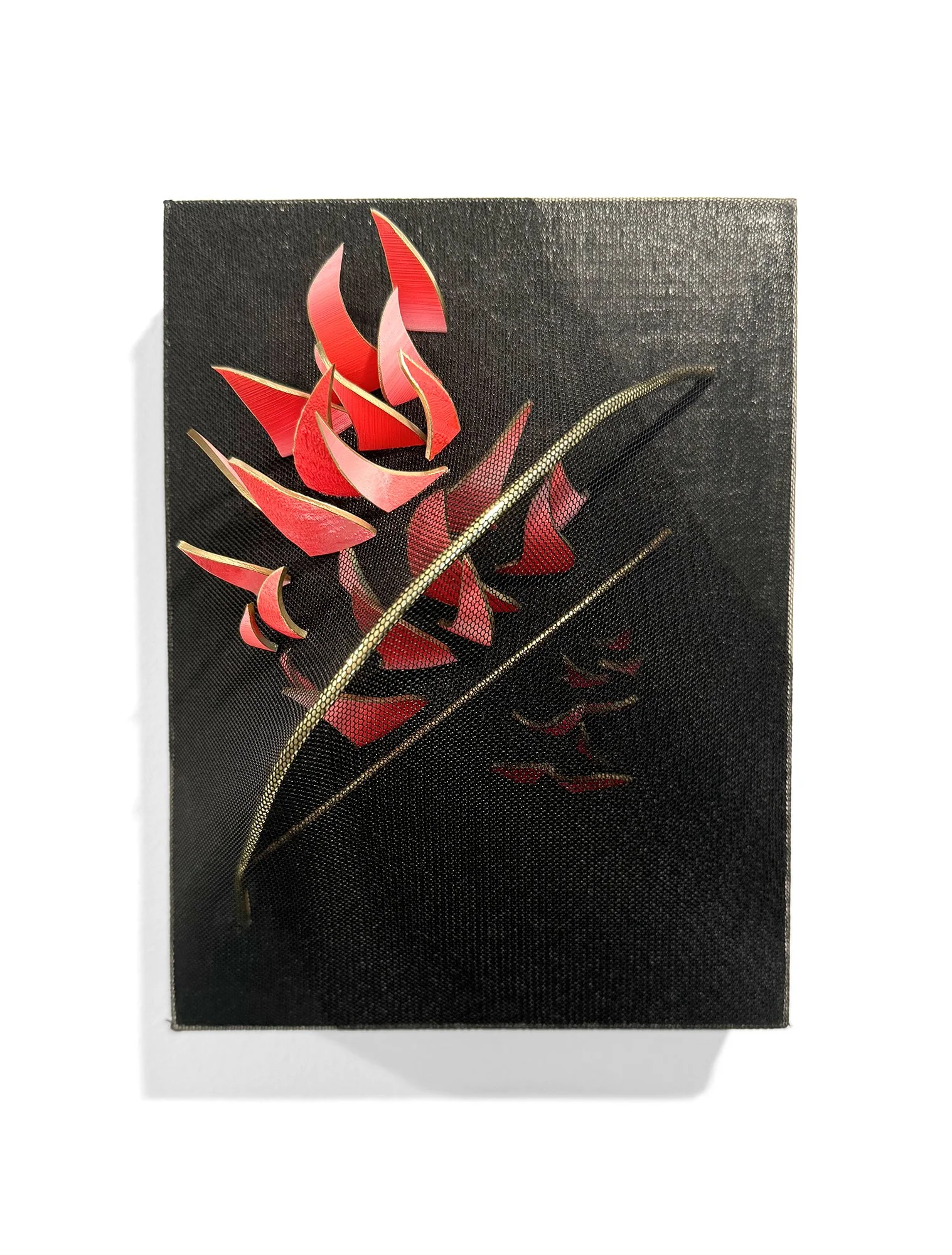

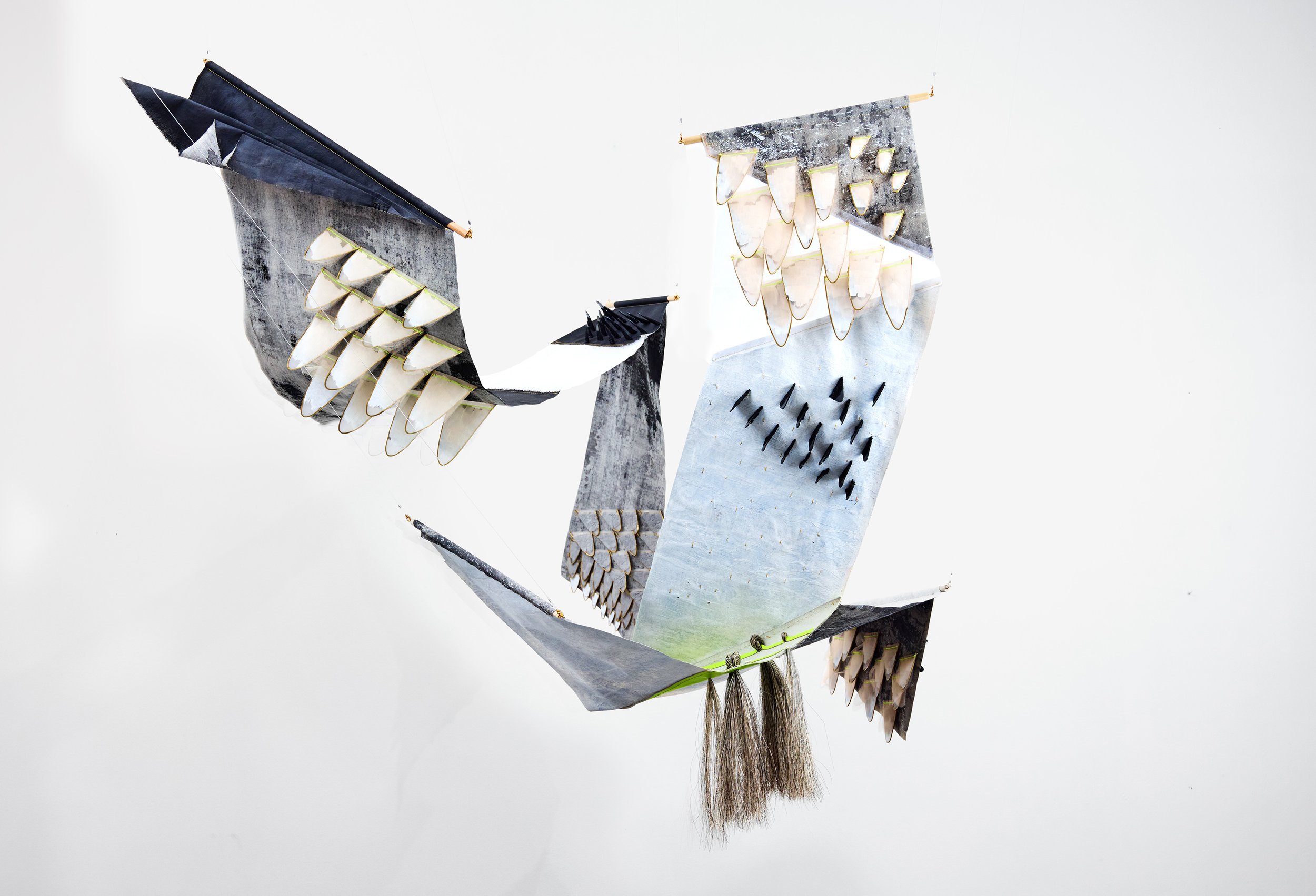
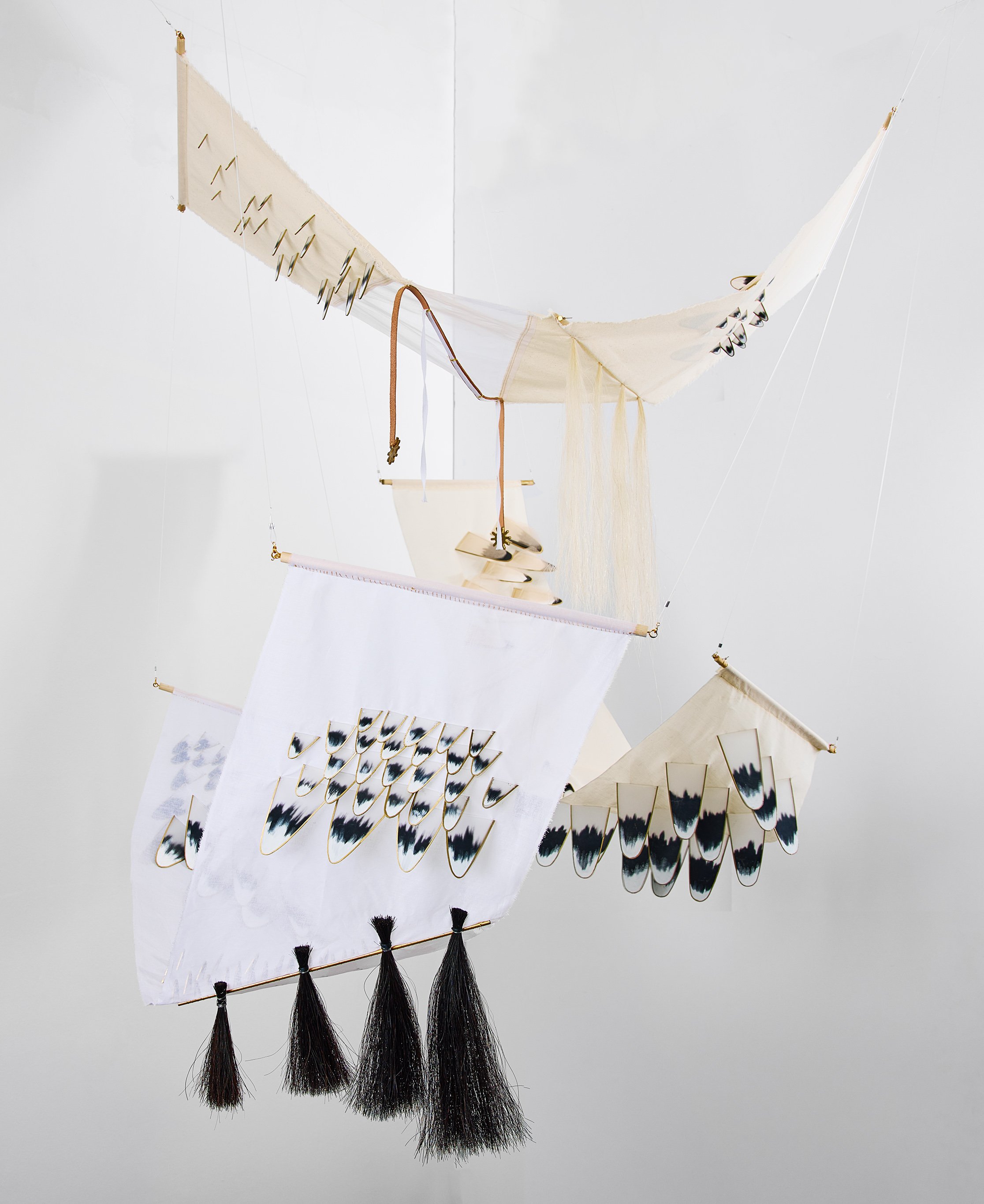
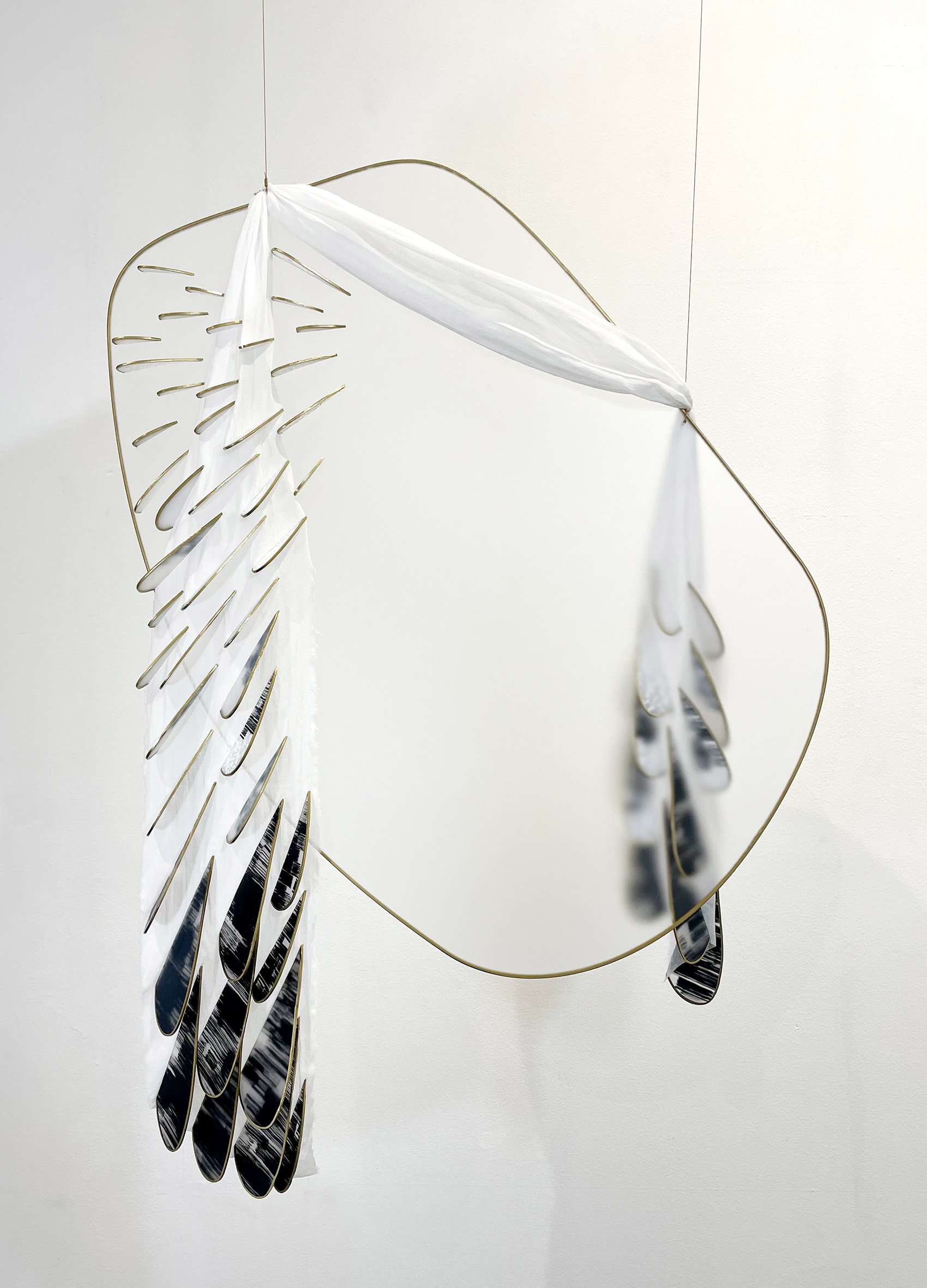
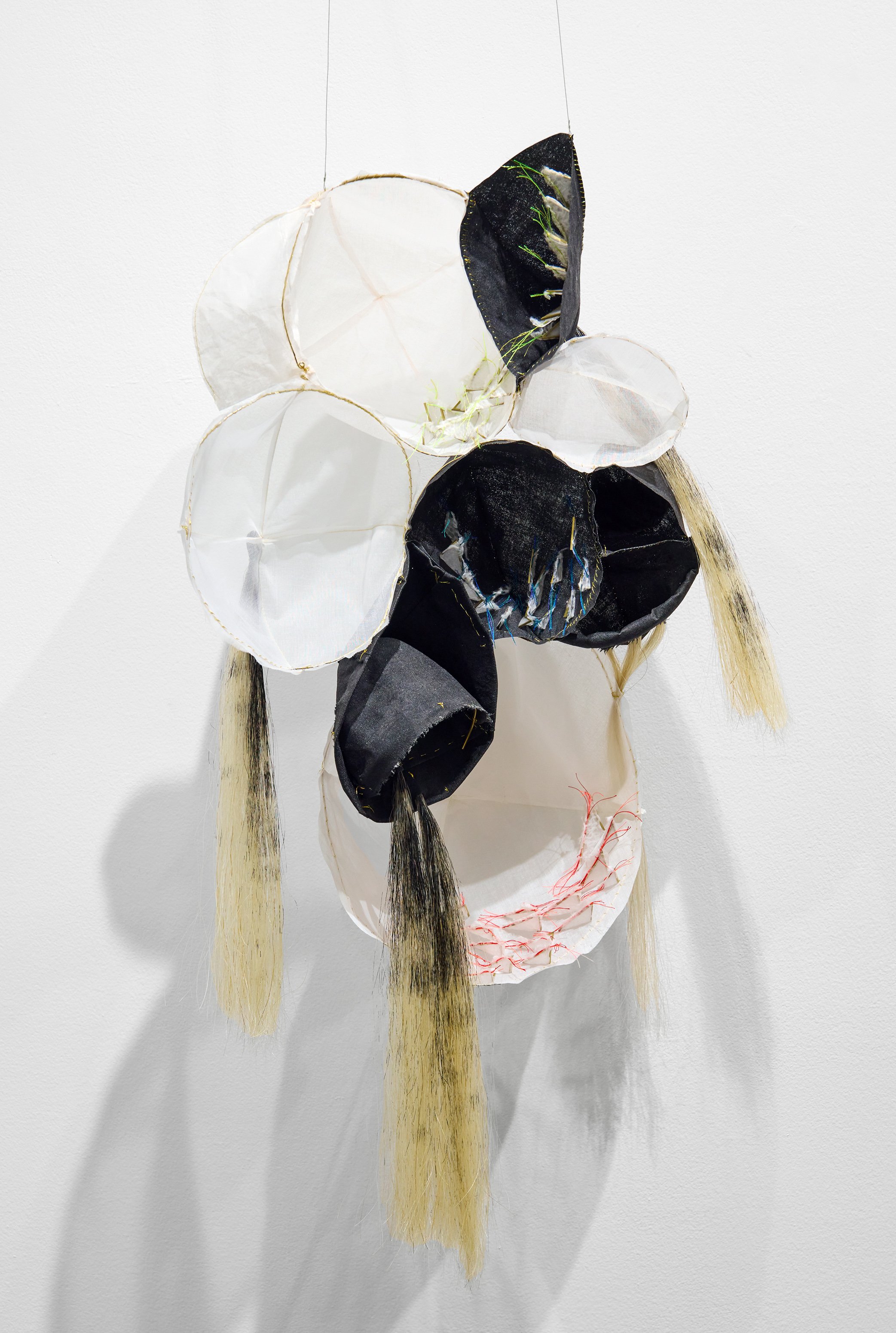

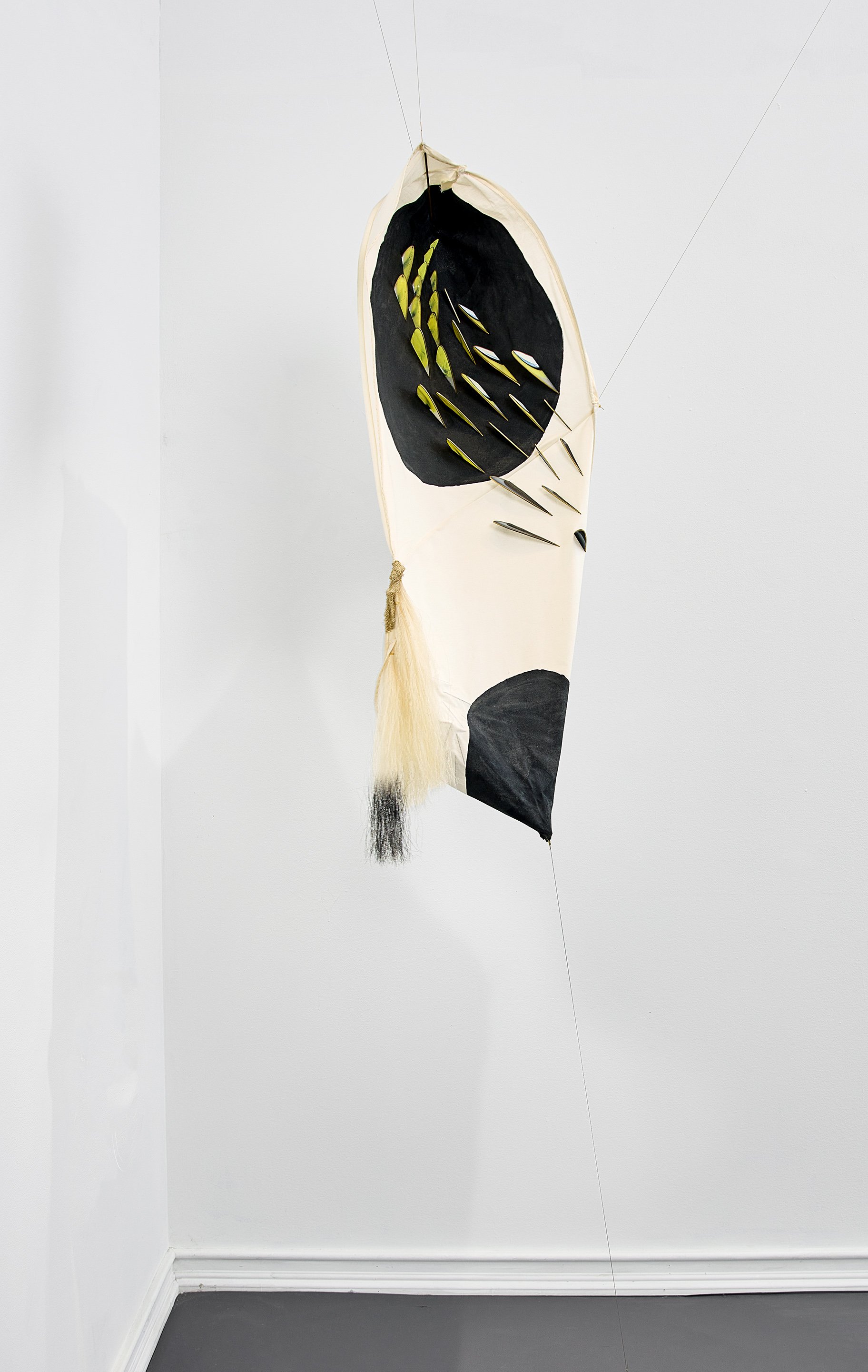

2023
Acrylic, sumi ink, enamel on cotton, thermoplastic, horse hair, leather
40 x 38 x 35 in
2023
Acrylic, enamel, horse hair, brass spurs, tulle, leather on cotton and thermoplastic
72 x 60 x 60 in
2023
Sumi ink, gold thread on cotton tape, muslin, brass
28 x 21.5 x 2 in
2023
Acrylic, enamel, sumi ink, horse hair, wire on thermoplastic and cotton muslin
38 x 21 x 20 in
2024
Acrylic and enamel on thermoplastic, wire, tulle on panel
6 x 8 x 4 in
















